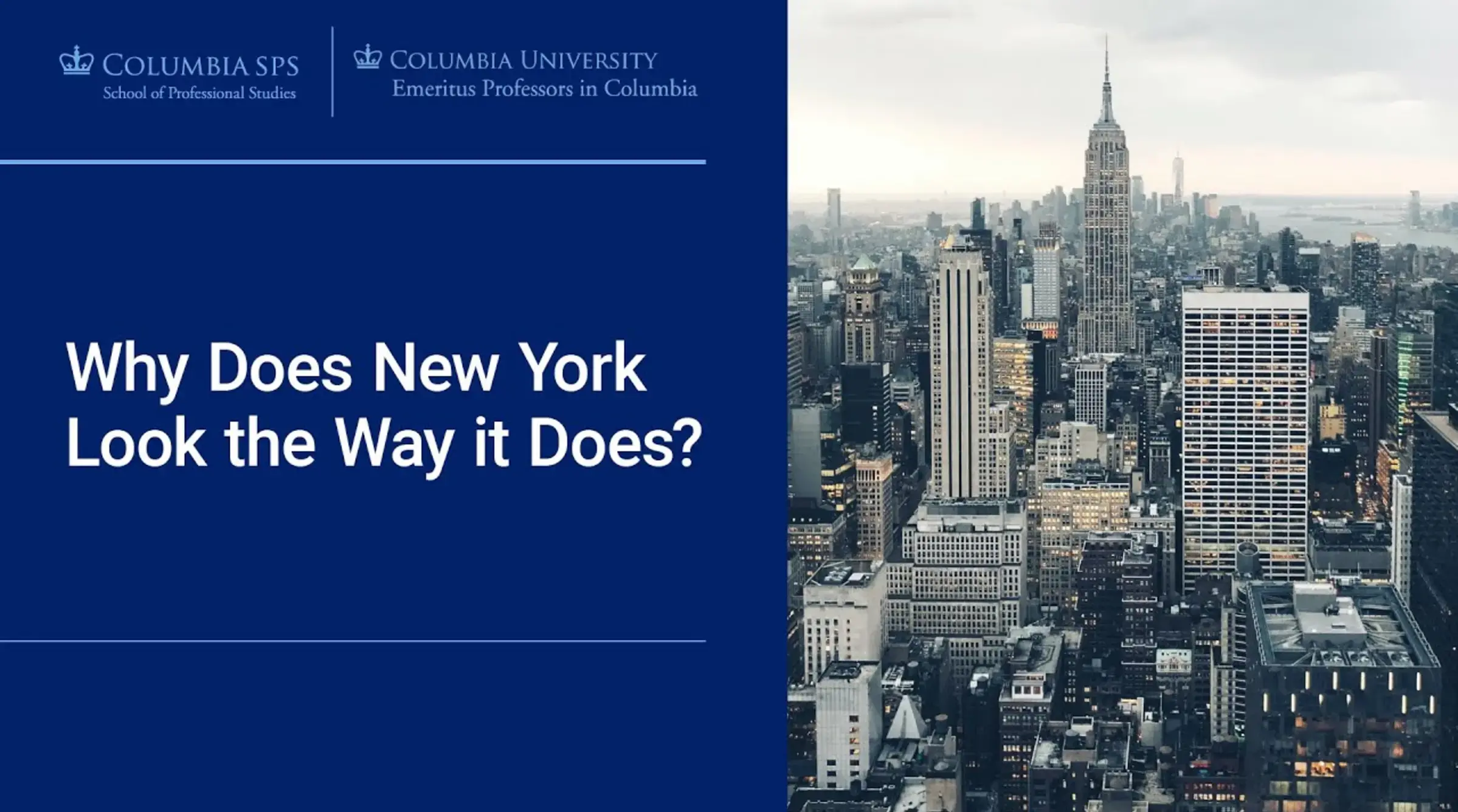Why Does New York Look the Way it Does?
Columbia University’s School of Professional Studies and Emeritus Professors in Columbia invite you to an EPIC/SPS Online Lecture with Ethel Sheffer
New York has been recognized as a world metropolis, a center of commerce, a generator of arts, culture and entertainment, a place of world-famous skyscrapers, and a city of hundreds of unique neighborhoods. Its buildings, streets, parks, and transportation are admired and enjoyed and at the same time are often frightening and confusing. As residents and visitors experiencing the city, we can often walk by famous old and new buildings without giving them much thought until we begin to see some structure or use that disrupts or even destroys the sense of our city.
But why is it that New York City looks the way it does? Skyscrapers on one block, three or four story buildings on another, parks and open spaces here but not there; how did this happen?
Zoning has had a relatively short history, but it plays a prominent role in the shaping of most cities. Remarkably, New York has been a pioneer in the field of zoning since it enacted the nation’s first comprehensive zoning ordinance in 1916 in a 14-page text and three sets of maps which designated use, height, and area in the city. And as we will see, from that relatively simple document which regulated egregious incompatible uses, zoning laws have more or less guided the city’s growth and development. It is an imperfect, complex, and often heavy-handed tool for implementing planning policy.
We will be discussing examples of some of the great developments and zoning regulations in New York, from the skyscraper and central business districts to the development of lower rise neighborhood communities, the growth of suburban living, the impact of the automobile, the recent supertalls, and the challenges of increased density.
Ethel Sheffer, FAICP, is an urban planner, civic and community leader, and educator. She has served as an Adjunct Professor in Columbia University’s Graduate School of Architecture, Planning and Preservation for more than 15 years. She has an extensive knowledge of New York City’s neighborhoods, has been a community leader in several noteworthy battles and developments, has served as the President of the New York Chapter of the American Planning Association, and is a member of the NYC Public Design Commission.
For event-related questions, please contact George Calderaro, gc2212 [[at]] columbia [[dot]] edu
